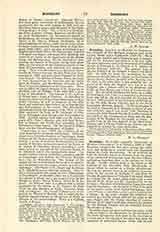

Rosselino, ANTONIO DI MATTEO DI DOMENICO, the youngest of five brothers, sculptors and stone cutters, family name Gamberelli (1427-78). He is said to have studied under Donatello and is remarkable for the sharpness and fineness of his low relief.
His most important work is the monument of Cardinal Jacopo of Portugal in the Church of S. Miniato al Monte, Florence (1461-67). The portrait bust of Matteo Palmieri in the Bargello is signed and dated 1468. In 1470 he made the monument for the Duchess of Amalfi, Mary of Aragon, in the Church of Monte Oliveto, Naples; the relief of the Nativity over the altar in the same place is also probably his.
A statue of St. John the Baptist as a boy is in the Bargello; also a delicate relief of the Madonna and Child, an Ecce Homo, and a bust of Francesco Sassetti. The so-called Madonna del Latte on a pillar in the Church of S. Croce is a memorial to Francesco Neri, who fell by the stab intended for Lorenzo de’ Medici. Other reliefs of the Madonna and Child are in the Via della Spada, Florence, and in the South Kensington Museum London. In the latter place is the bust of Giovanni di S. Miniato, a doctor of arts and medicine, signed and dated 1456.
Working in conjunction with Mino da Fiesole, Rossellino executed the reliefs of the Assumption of Mary and the martyrdom of St. Stephen for the pulpit at Prato. A marble bust of the boy Baptist in the Pinacoteca, Faenza, and a Christ Child in the Louvre are attributed to Antonio by some authorities.
M. L. HANDLEY

